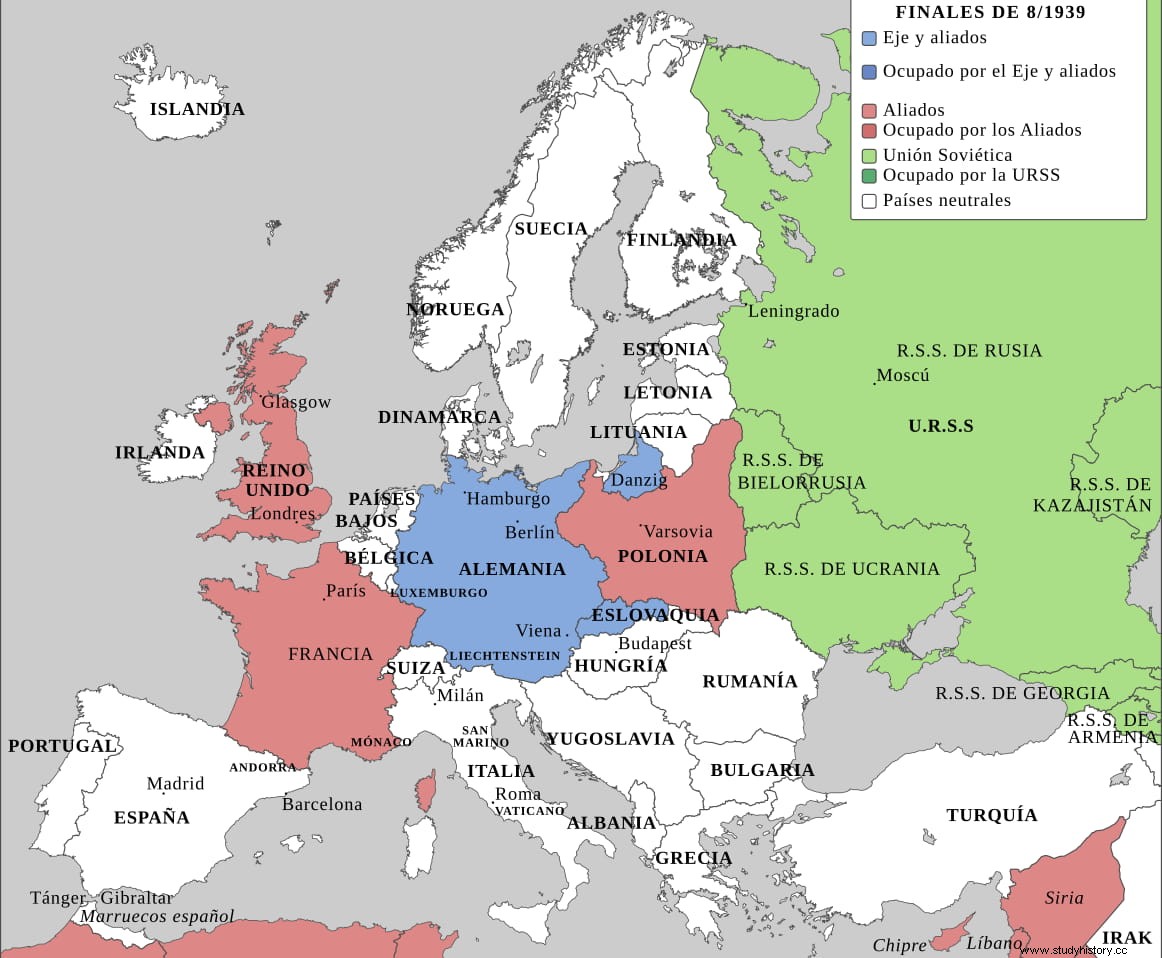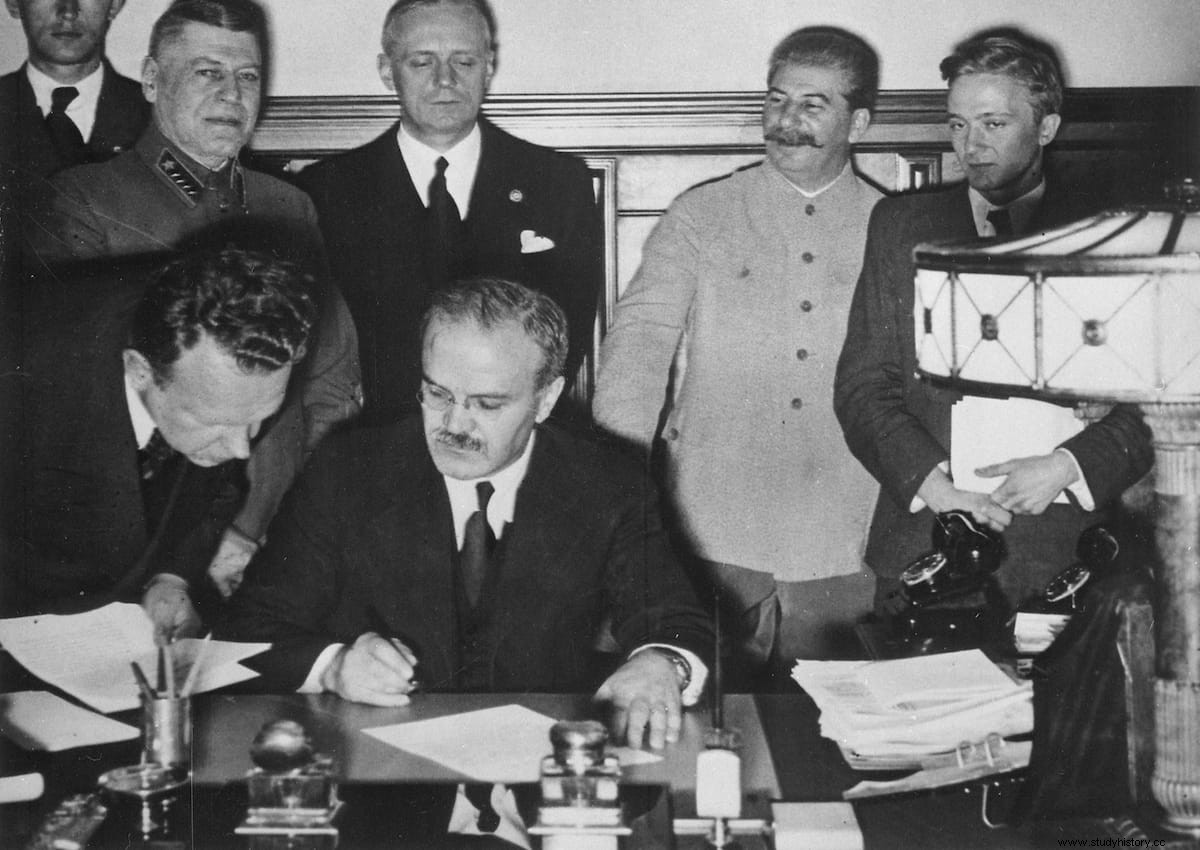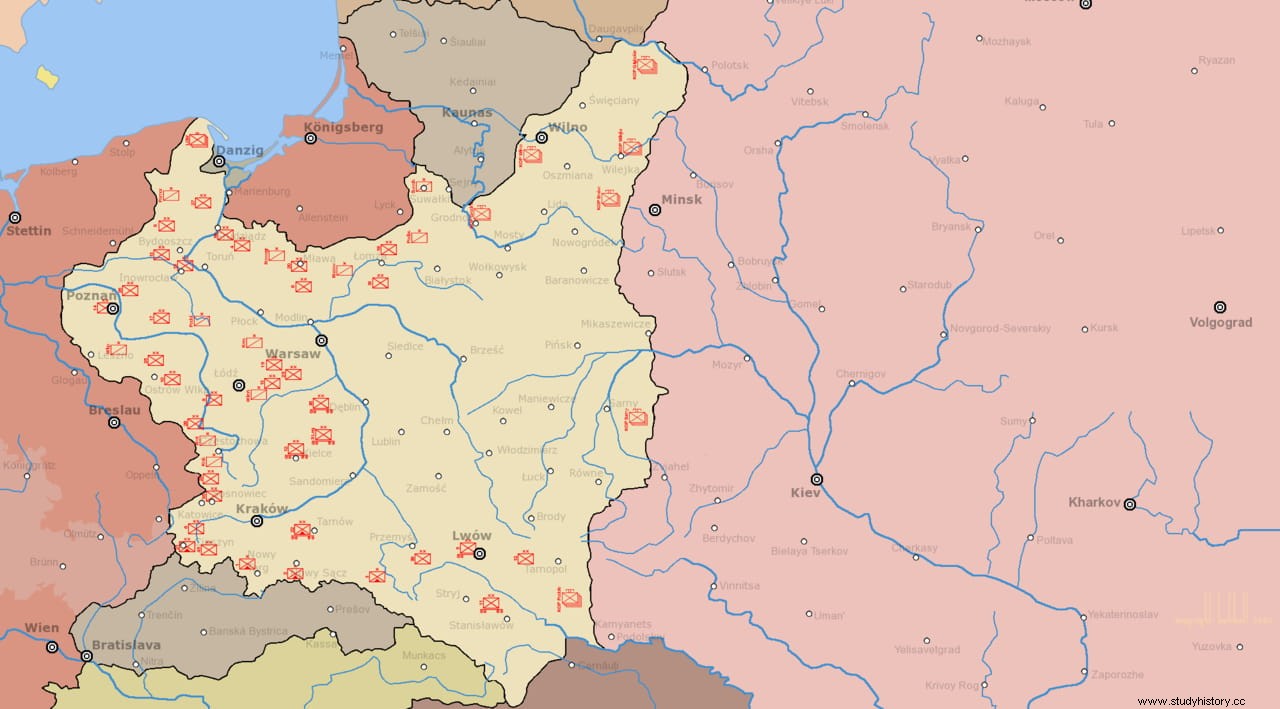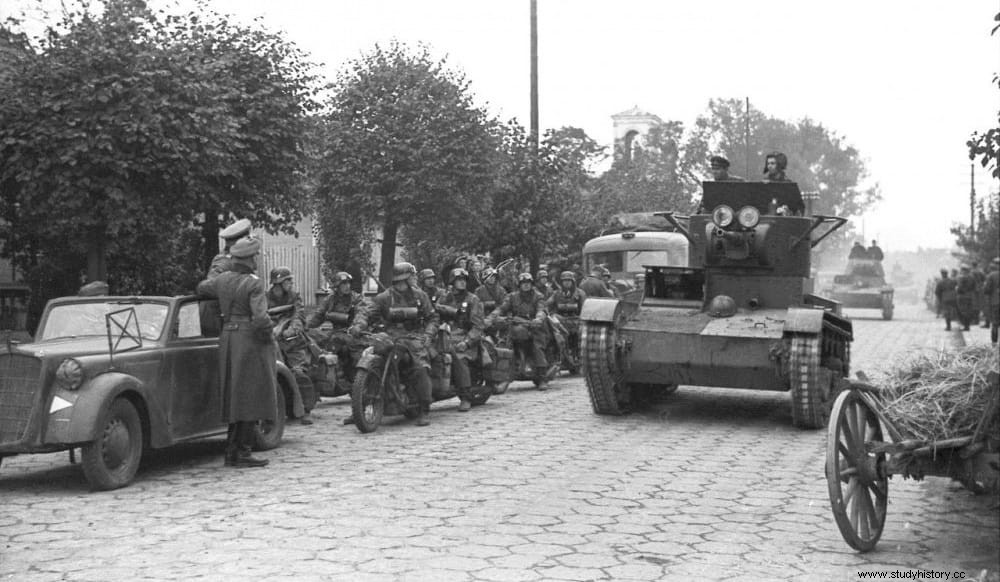Some time ago, in an article that we published here with the title When Poland snatched territories from Czechoslovakia before being invaded by Germany in World War II, we ended the text with a lapidary phrase:«Poland had sown winds and now gathered storms».
Well, that stormy moment began on September 1, 1939 with the German occupation, but it erupted three weeks later, when the streets of the Polish city of Brest-Litovsk became the scene of something unusual:a significant mixed parade of German troops. and Soviet.
The Polish government had spent decades trying to become a great European power by uniting around it the countries of the central and eastern continents in a coalition it called Międzymorze . He based this policy on a series of territorial claims over Silesia Cieszyński, Orawa and Spisz, border regions whose ethnic component was very varied, with its northern part -Podhale- closely linked culturally and linguistically with Poland.

The problem was that those areas had been part of Czechoslovakia since the end of the First World War and he was not going to give them up because they were rich in mining and industry. That is why Hungary also claimed them. The problems that this derived, with military skirmishes, were tried to solve between 1919 and 1925 through negotiations that divided the territory, leaving a part for the Czechs and another for Poland. Those borders remain today.
Everything changed when Nazi Germany annexed the Sudetenland in 1938 and the Polish government, fearing they would lose their piece of Czech cake, also intervened in Silesia. It was good for Hitler to share responsibilities, so he not only did not prevent it but also allowed Poland to take even more and Hungary to stay with Transcarpathian Ruthenia. To complicate matters, the Slovaks became independent from the Czechs, so that country disappeared de facto , becoming the Protectorate of Bohemia and Moravia.

Now, it was a matter of time before Germany and Poland collided (despite the fact that they had a non-aggression pact since 1934), since the former aspired to connect its eastern border with Danzig, an isolated German city in Polish territory. On the other hand, the Warsaw government had long had a very tense relationship with the Soviet Union for seizing Ukraine that led both to war between 1919 and 1920. Unable to impose one on the other, they signed an agreement to share the disputed territories.
But, as we said before, the passing of the years clouded the issue. The Soviets continued to claim their rights over the Baltic states and Finland, as well as to act in Poland or Romania if they were considered threatened, so Warsaw made a shift in its policy to seek the protection of France and the United Kingdom.
Stalin, who was disappointed with the Western powers for refusing to intervene in the Spanish Civil War and being timid before Hitler, also made a move and decided to agree directly with him.

The talks resulted in the Molotov-Ribbentrop Pact, a non-aggression agreement that included an additional secret protocol by which they promised to divide up Poland in the event of an intervention. For the Soviets it meant the possibility of recovering and unifying Ukrainian and Belarusian territories ceded to the Poles long ago, as well as free hands to bring Latvia, Lithuania, Estonia and Finland under their orbit. For the Germans, it was the safe conduct that opened the door to the invasion of the neighboring country.
That invasion began on September 1, 1939 and was completed in just over a month, on October 6, after the Battle of Kock. The Soviets did not intervene at first, since they were immersed in their own border problems with Japan and Stalin preferred to wait for Poland to weaken. It was not until the 17th that the Red Army crossed the border, arguing that Poland no longer existed because its government had fled. Since most of the Polish forces were fighting the Germans in the west, there were barely twenty thousand men left to hold off the million that came at them.

In fact, aware of their inferiority, the strategy to be followed by the high command was to withdraw, put up the minimum resistance and try to evacuate the troops from the country to concentrate them on the Romanian border, waiting for French and British help that never came. The Soviets advanced, therefore, with a certain calm and in some places the Ukrainian, Belarusian and Jewish minorities even applauded their arrival. Thus, Commander Semyon Krivoshein's tanks reached the village of Vidomlya, where they met the vanguard of German General Heinz Guderian.
The officers of both armies fraternized and resolved to proceed together to Brest-Litovsk, where they entered on September 22 without hindrance because Guderian had taken it nine days earlier, establishing his base of operations there.
The Soviets were well received and the German general offered them a joint parade through the streets. Krivoshein refused him because his men needed rest, so he promised to send only the 4th Battalion of the 29th Light Tank Brigade and a music band. The proposal was accepted and the event was agreed for that afternoon.

At 16:00, after the construction of a couple of makeshift triumphal arches, decorated with swastikas and red stars, the soldiers of both armies walked through Brest-Litosvk marking time, in an atmosphere of mutual cordiality. It should be noted that, in his memoirs, Krivoshein says that he did not want his soldiers to parade alongside the Germans because the accumulated fatigue would have made them present a worse appearance than that of the Teutons, which is why the parades were not joint but Every man for himself.
It is also curious to add that, four years later, Krivoshein would be one of the protagonists of the victorious Battle of Kursk, in which Soviet armor defeated the Germans.
After the act, Guderian ordered to leave the city because he had received from Berlin the indication that the border between Germany and the USSR on Polish territory would be located on the Bug River, which was behind his lines. The one in Brest-Litovsk was not the only episode of this type, with news of others held in places such as the Polish Bialystok, the Ukrainian Lwow or the Belarusian Grodno and Pinsk (Belarus). However, in many cases these were not parades by both armies but only German troops marching past Soviet officers on their way back to their demarcation zone.

The aggression against Poland was the straw that broke the camel's back for the patience of the United Kingdom and France, which declared war on Germany. Obviously, they did not count on Stalin's support for this, but in any case, that situation would not last long. Two years later, on June 22, 1941, Hitler launched Operation Barbarossa, the invasion of the USSR.
